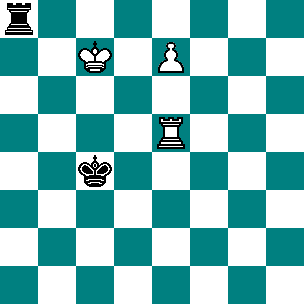
The game is still in the middlegame if middlegame elements still describe the position. Mednis and Crouch address the question of what constitutes an endgame negatively. Some problem composers consider that the endgame starts when the player who is about to move can force a win or a draw against any variation of moves ( Portisch & Sárközy 1981:vii). Zugzwang is often a factor in endgames and rarely in other stages of the game.Passed pawns increase greatly in importance.Flear considers an endgame to be where each player has at most one piece (other than kings and pawns) and positions with more material where each player has at most two pieces to be "Not Quite an Endgame" (NQE), pronounced "nuckie" ( Flear 2007:7–8).Īlburt and Krogius give three characteristics of an endgame: ( Alburt & Krogius 2000:12)
#Chess endgame tablebase plus#
Fine, 1952), while others consider a position to be an endgame when each player has less than a queen plus rook in material. Some authors consider endgames to be positions without queens (e.g. Minev characterizes endgames as positions having four or fewer pieces other than kings and pawns ( Minev 2004:5). Alternatively, an endgame is a position in which the king can be used actively, but there are some famous exceptions to that ( Speelman 1981:7–8). With the usual system for chess piece relative value, Speelman considers that endgames are positions in which each player has thirteen or fewer points in material (not counting the king). Alexander Alekhine said "We cannot define when the middle game ends and the end-game starts" ( Whitaker & Hartleb 1960). There is no strict criterion for when an endgame begins, and different experts have different opinions ( Fine 1952:430). This article generally does not consider studies.Īn endgame is when there are only a few pieces left. Artistic endgames ( studies) – contrived positions which contain a theoretical endgame hidden by problematic complications ( Portisch & Sárközy 1981:vii).Practical endgames – positions arising in actual games, where skillful play should transform it into a theoretical endgame position.Theoretical endgames – positions where the correct line of play is generally known and well-analyzed, so the solution is a matter of technique.

This article uses algebraic notation to describe chess moves.Įndgames can be divided into three categories:


The simplest endgames have been solved, that is, the outcome (win, loss, or draw) of best play by both sides is known, and textbooks and reference works teach the best play. It can be brought to the center of the board and act as a useful attacking piece. The king, which has to be protected in the middlegame owing to the threat of checkmate, becomes a strong piece in the endgame. In particular, pawns become more important as endgames often revolve around attempting to promote a pawn by advancing it to the eighth rank. The endgame, however, tends to have different characteristics from the middlegame, and the players have correspondingly different strategic concerns. The line between middlegame and endgame is often not clear, and may occur gradually or with the quick exchange of a few pairs of pieces. In chess and chess-like games, the endgame (or end game or ending) is the stage of the game when few pieces are left on the board.


 0 kommentar(er)
0 kommentar(er)
